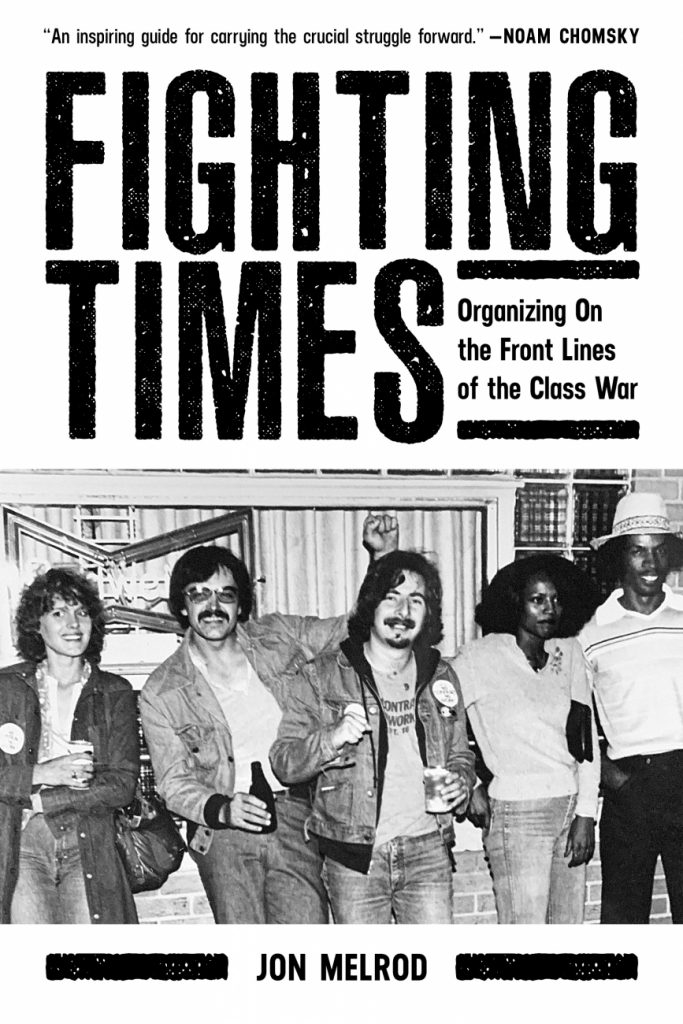By Ron Jacobs
Counterpunch
September 9th, 2022
Image by Jakayla Toney.
In the 1970s thousands of leftists—many of them members of various communist groups that came out of the dissolution of Students for a Democratic Society(SDS) –went to work in the industrial sector of the US. The intention was to organize the working class into a revolutionary element of a potential revolution. Many believed that revolution would take place in their lifetimes. Our current reality reminds us every day that it did not. Despite this failure, the fact is that these young leftists did influence the US labor movement in a positive way, moving a substantial portion of the unionized rank and file out of complacency. Their successes in creating a workplace where the workers had the power to determine their working lives were many. Unfortunately, the capitalist powers still had the upper hand and by the mid-1980s were back in control, demanding and receiving concessions from unions by threatening to move jobs. As we all know, many went ahead and moved the jobs anyhow.
I have a few friends who took this route. Most of them were in the Revolutionary Union (RU). As for myself, I was already working a shit job as a short order cook at an IHOP. After I quit that job and worked at Howard Johnson’s—where we walked out because of a racist manager—I eventually did go to work at an industrial site. My first such job was at a brick factory where I watched bricks go by on a conveyor belt. My task was to pull the malformed bricks off the belt. As the orders piled in, the belt moved faster and more malformed bricks got past me. I left after two weeks. Next, I worked at a place that made preformed concrete balconies for apartment buildings. The job was less boring but physically more taxing. However, I had a goal in mind. I was going to California with a friend in three months. That was my light at the end of the tunnel. I made my three months worth of pay and left. I would occasionally work other industrial jobs through the day labor office the eight years I lived in California. When I moved north to Washington State in 1985, I ended up assembling circuit boards for a subcontractor whose primary client was a new company called Microsoft.
Some of these jobs sucked more than others, but they all sucked. Being a temporary worker most of the time, I used that as an excuse and told myself I did not have time to attempt any organizing. Before I took the job in Washington state, I signed what was essentially an illegal yellow dog contract in which I promised not to talk union at all. I broke the promise, but it didn’t matter. The people who worked there were the castoffs from a major union busting campaign undertaken at the local Simpson lumber mill right before I moved there. The International Woodworkers of America (IWA) had conceded hundreds of jobs and most of its future operations in the town. Consequently, my co-workers at the circuit board assembly plant were afraid of unionizing and skeptical that a union could really do much about anything, anyhow.
Jon Melrod was someone who did go to work on an industrial shop floor and stuck it out for over a decade, organizing a militant and democratic rank and file force within his union local. His new book, titled Fighting Times: Organizing on the Front Lines of the Class War, tells the story of those times. After graduating from the University of Wisconsin in Madison, where he was actively engaged in the antiwar movement and various counterculture battles against the police and the structures they protect, Melrod joined the RU and began looking for work. His intention was to organize working people into a movement that fought for their rights on the shop floor, with a future goal of that movement creating a communist revolution in the United States. Of course, fulfillment of the second goal never came close. However, the creation of a fighting rank and file movement was achieved.
Melrod begins his tale in Washington, DC, where he grew up. He briefly discusses going to desegregation protests in the area, including one at Glen Echo Amusement Park in nearby Maryland. After entering college in 1966, he quickly became involved in a growing antiwar movement in Madison, Wisconsin. By the time he graduated in 1970, he was being watched by the FBI and other law enforcement agencies. He was also part of the Revolutionary Unions movement that would soon evolve into the national organization abbreviated as RU. This would be the motivation for his entry into the industrial workforce. After getting a job at the now defunct American Motors Company (AMC) in Milwaukee, he began organizing a radical caucus within his local. His efforts were not appreciated by the local union officials who seemed fine with things as they were. Nor were his efforts appreciated by AMC. In fact, he got fired after organizing a campaign against a speedup of the assembly line. Part of the reason for his firing was the FBI telling management and union leadership that Melrod was a communist. One of his co-workers was also fired, mostly because he was working closely with Melrod. Although the two were eventually rehired (after a long public and legal campaign) with back pay, Melrod needed work. So, he ended up working at a tannery. His description of the work and the site reminded me of the panel depicting Hell from Hieronymus Bosch’s triptych known today as The Garden of Earthly Delights. Maggot-infested hides, poisonous liquids and fumes, pits filled with these liquids. It was with relief that he went back to work on the AMC line when he was reinstated.
Of course, like any organizer worth their salt, Melrod not only learned from his previous experience at AMC and his fruitless effort to talk union at the tannery, he applied the lessons to the rest of his time at AMC. The story he relates is one that includes confrontation with particularly obnoxious and dictatorial bosses, racist and sexist foremen and union members, an international office all too comfy with the very industry captains its members oppose, and a rank and file slowly but surely convinced they have genuine power that can only grow with its utilization. Excerpts from the caucus’s newsletter are included as is a discussion are the attacks on the newsletter’s right to publish. The reader is brought into the thick of these battles via Melrod’s vivid prose and colorful descriptions. He describes the struggle to keep every member united against the company’s attempts to divide them along racial, gender and political lines. As someone who has been involved in organizing drives and is currently the head of his union local, the episodes he discusses were both familiar and instructive.
Indeed, if one were to explain to a working person interested in organizing a union why they should read this book, the key word would be instructive. The tactics so vividly written down in this text remain useful and appropriate. They will remain that way as long as there are managers and supervisors who make it their duty to harass and belittle workers, CEOs and boards of directors whose pursuit of profit encourages those activities, and national union leadership that identifies more with the company board of directors than with the rank and file whose dues pay their often exorbitant salaries. Not only has Jonathan Melrod told a good story in his book Fighting Times, he has also provided today’s workers with a guide to workplace organizing that is inspiring, practical and entertaining to read.








